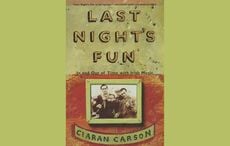Lughnasa, or Lughnasadh, is one of the four great fire festivals of the Celtic year, celebrated with plenty of special Lughnasa recipes, rituals, traditions, and symbols.
As the exact Lughnasadh date may fall anytime between August 1 and August 12, IrishCentral has your definitive guide for all the best ways to celebrate the Lughnasadh festival.
Lughnasadh date
Lughnasa marks the beginning of autumn (fall). It is the beginning of the harvest season and celebrates the decline of summer into winter. The old Celtic pagan festival lasted a month, with August 1 at its midpoint, but is currently most often celebrated on the Sunday closest to that date.
Celtic festivals and rituals typically center around the assurance of a bountiful harvest and the celebration of the harvest cycle.
There is often much confusion surrounding Lammas/Lughnasa because of the variety of names and the differing dates on which it is celebrated.
When the Gregorian system was adopted in Ireland in 1782, 11 days had to be dropped to make the calendar astronomically correct. This led to the festival being celebrated on either the 1st or the 12th of August, called respectively New Style and Old Style Lughnasa.
To further complicate matters, many Lammas/Lughnasa festivities became appropriated to Christian saints’ days or the nearest Sunday.
Lughnasadh festival traditions
Folklore survivals of Lughnasa are celebrated under a wide variety of names, such as Bilberry Sunday, Garland Sunday, and Domhnach Crom Dubh (‘Crom Dubh Sunday’), depending on the locality, at various dates between mid-July and mid-August.
The name Bilberry Sunday comes from a tradition of gathering bilberries (blueberries) at this time. If the bilberries were bountiful, the crops would be also. This is also the feast of the first grain harvest. Though the exact date of the festival varies, in the old days it was held anywhere from August 1 to August 14. Often, it began at sundown of the previous evening, or July 31, since the Celts measure their days from sundown to sundown.
Garland Sunday is so-called because garlands of flowers and greenery are usually placed around most of the Holy Wells. These wells are found throughout Ireland and are most often dedicated to the patron saint of the parish. This day also marked the end of the ‘hungry season' as people were now confident there’d be plenty of new potatoes, freshly baked bread, and baskets brimming with berries.
Lughnasadh recipe
Nothing reminds us more of summer than a freshly baked blueberry pie full of big and plump, sweet and juicy berries. The important thing to remember when making any fruit pie is to start with good-quality fruit. If using cultivated blueberries make sure they are firm, plump, fragrant, and dark blue with a dusty white bloom. The white bloom is the blueberry’s natural protection against the sun and is a sign of freshness.
Blueberry pie recipe for Lughnasadh
Ingredients:
- 5 cups fresh blueberries
- 1 tablespoon lemon juice
- 1 (15-ounce) package refrigerated pie crusts
- 1 cup sugar
- ½ cup all-purpose flour
- 1/8 teaspoon salt
- ½ teaspoon ground cinnamon
- 2 tablespoons butter or margarine
- 1 large egg, lightly beaten
- 1 teaspoon sugar
Method:
Sprinkle berries with lemon juice; set aside.
Fit half of the pastry in a 9-inch pie plate according to package directions.
Combine 1 cup sugar and the next 3 ingredients; add to berries, stirring well.
Pour into pastry shell, and dot with butter.
Unfold the remaining pastry on a lightly floured surface; roll gently with a rolling pin to remove creases in the pastry.
Place pastry over filling; seal and crimp edges.
Cut slits in the top of the crust to allow steam to escape.
Brush the top of the pastry with beaten egg, and sprinkle with 1 teaspoon of sugar
Bake at 400° for 35 minutes or until golden.
Cover edges with aluminum foil to prevent over-browning, if necessary.
Serve with vanilla ice cream, if desired.
* Originally published in 2015. Updated in July 2024.




Comments